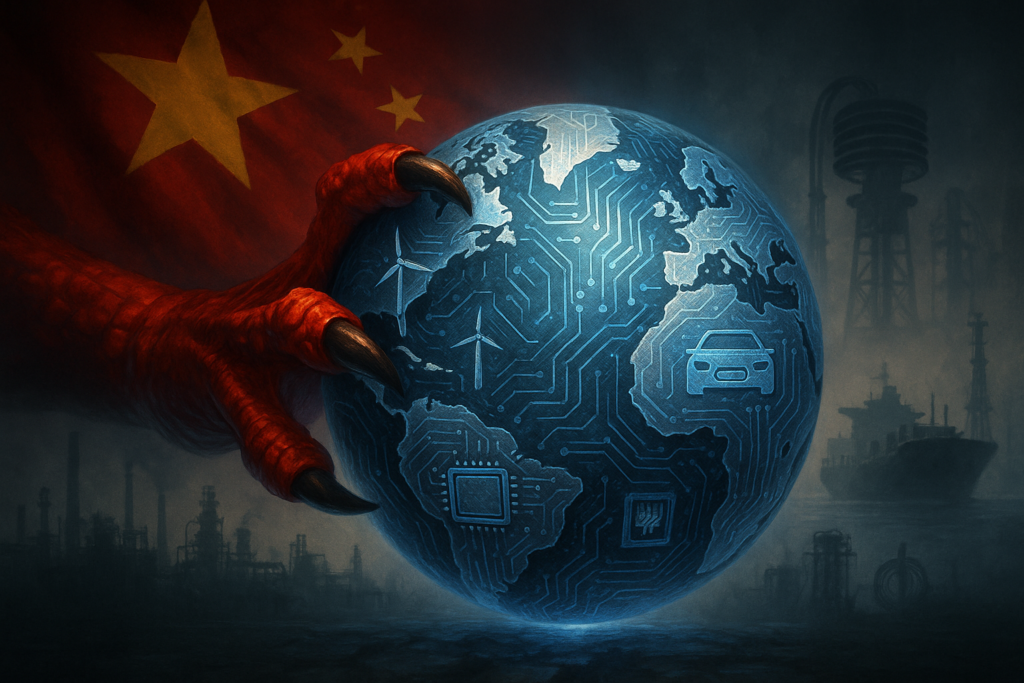
- China accounts for roughly 70% of global rare earth mining and nearly 90% of the world’s processing capacity.
- What started as a trade advantage has turned into a geopolitical instrument, giving Beijing greater sway over the world’s industrial supply chains and security frameworks.
- The rare earth problem is no longer geological; it’s a geopolitical, technological, and resilience problem.
- Economic leadership no longer springs as much from access to resources as from leadership of the technologies to process and consume them.
Rare Earth Elements (REEs), a group of 17 metals with superior magnetic and conductive properties, comprise the invisible backbone of the contemporary technological universe. They enable the small but mighty magnets in electric cars, the efficacy of windmills, and the radiant screens of mobile phones. They also lie beneath innovative defence systems, ranging from radar sensors to missile guidance systems. In reality, the new economy and clean energy revolution are intertwined with rare earths. As nations compete to electrify transportation and achieve energy independence, REEs have quietly become strategic global assets from niche industrial materials.
The fragility of the rare earth supply chain became dramatically apparent during recent global disruptions. The COVID-19 pandemic and the Ukraine conflict exposed how vulnerable global logistics for critical minerals truly are. In 2024, Myanmar’s sudden production halt highlighted how quickly regional developments can ripple across global markets, driving up rare earth prices and disturbing production schedules. Port congestion, labour shortages, and shipping bottlenecks during these years further worsened the situation, underscoring the weaknesses of efficiency-driven models compared to resilience-oriented ones. These disruptions have compelled industries worldwide to rethink their procurement strategies, diversify sources, and strengthen stockpiling measures.
Dominance in the Rare Earth Market by China
No writing on rare earths can begin without recognising China’s overwhelming presence in the industry. Over the past three decades, Beijing has strategically built an empire around these materials, not just by mining them, but by mastering the entire value chain. Today, China accounts for roughly 70% of global rare earth mining and nearly 90% of the world’s processing capacity. It is this processing that the sophisticated chemical purification of unprocessed ore into usable oxides and alloys provides China with its actual leverage.
This dominance has now turned into a geopolitical tool. Beijing has recently strengthened export controls, layering new levels of licensing and monitoring on REE technologies and magnets, especially those used for defence and making semiconductors. China has even requested India to provide formal assurances that magnets supplied to it will not find their way to the United States, reports suggest. Such guarantees are indicative of how Beijing aims to isolate its supply chain from being used to indirectly assist its strategic competitors. What started as a trade advantage has turned into a geopolitical instrument, giving Beijing greater sway over the world’s industrial supply chains and security frameworks.
A Chinese Commerce Ministry spokesperson recently justified these measures, stating that “rare-earth-related items have dual-use properties for both civilian and military applications. Implementing export controls on them is an international practice.” The spokesperson further added that certain foreign organisations and individuals have been directly transferring or processing and subsequently transferring controlled rare-earth materials originating
from China to relevant parties, either directly or indirectly, for military and other sensitive applications. These statements reflect Beijing’s attempt to position its tightening export policies as legitimate and aligned with global standards, even as they reinforce its strategic advantage.
International Ramifications of China’s Export Restrictions
The ramifications of China’s new export bans are wide-ranging. For countries reliant on Chinese REEs, the dangers go far beyond supply deficits; they reveal a profound underlying structural weakness in their economies. India, for example, has already started learning some hard lessons about it. The government is said to be planning to create a National Critical Mineral Stockpile (NCMS), with at least two months’ supplies of vital material reserves. This action comes as increasing fear mounts that an abrupt supply break could slow down India’s fast-growing EV and renewable industries.
The matter holds even greater urgency for the United States. US defence and technology firms are dependent on rare earths to produce advanced electronics, precision weapons, and renewable infrastructure. The new restrictions promise to constrict already tight supply chains, causing Washington to seek emergency alternatives and new trade alliances. Such concerns are evident in Japan as well as Europe, both of which still recall the shock of China’s temporary suspension of exports to Japan in 2010 after a diplomatic row. The present steps follow that precedent, a reminder that China’s grip on REEs can be used as a geopolitical tool in volatile situations.
Alternative Sources and Strategies for India
India, with its long-standing realisation of its own constrained rare earth refining capacity, is now shifting gears. India has significant reserves, especially in Tamil Nadu coastal sands, Odisha, and Rajasthan. These are underutilised because of the lack of refining capacity and environmental limits. The Indian government has been shifting into higher gear recently with attempts to auction fresh mining blocks and revive the space for public sector participants like Indian Rare Earths Limited (IREL).
Apart from local mining, New Delhi is broadening alliances. India and Australia, both of them within the Quad architecture, have deepened cooperation on strategic minerals. So has the India–U.S. Working Group on Critical Minerals to exchange technology and best practices for processing and recycling.
India is also establishing e-waste recycling plants to salvage neodymium, dysprosium, and other rare earths from waste electronics. Together, these steps aim at making India less dependent on the political or economic choice of any one supplier, especially China.
Innovations in Rare Earth-Free Technologies
As the governments of the world focus on diversifying supply, industry players are tackling the threat from the other side by eliminating their own dependency on rare earths. Perhaps one of the greatest accomplishments to date has been achieved by Ola Electric, which has designed and certified a rare-earth-free ferrite motor for its electric scooters. This design, as the company asserts, is just as efficient and torque-capable as traditional rare-earth-based motors but saves costs substantially and decouples production from geopolitical risks.
Other global companies are heading in the same direction. The German automotive parts producer Mahle has launched its own rare-earth-free electric motor, with recyclability and sustainability as key focus areas. Meanwhile, research teams in the United Kingdom have managed to develop solar cells that are flexible, light, and completely free of rare earths, a development that can revolutionise renewable energy production. These breakthroughs are part of a larger pattern: as governments struggle with monopolies of resources, technological innovation is proving to be an effective leveller.
The Way Forward
The rare earth problem is no longer geological; it’s a geopolitical, technological, and resilience problem. The path forward for India and other emerging powers is a strategy of balance, a combination of domestic resource development, technological advancement, and global cooperation. A massive investment in R&D for substitutes for rare earths and advanced recycling will be essential. Equally significant is the setting up of open and environmentally friendly mining laws that can attract private investment without any compromise on ecological balance.
Internationally, building supply partnerships such as the Minerals Security Partnership (MSP) launched by America offers a means through which resources can be shared, technology exchanged, and collaboration between nations striving to reduce Chinese dependence. Consumer awareness and industry adherence are also required; principles of the circular economy and sustainable use can decrease the aggregate pressure on natural stocks.
Finally, rare earths symbolise an even larger 21st-century reality: economic leadership no longer springs as much from access to resources as from leadership of the technologies to process and consume them. As the world moves toward cleaner energy and more intelligent devices, the nations that build healthy and responsible supply chains for these critical minerals will author the next chapter in world industrial power.
Tejashree P V holds a Master’s degree in English Literature from IGNOU and a Bachelor’s degree in Journalism, English, and History from Vivekananda Degree College. A UPSC aspirant, she has a keen interest in international affairs, geopolitics, and policy.
